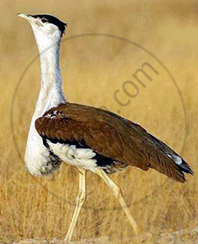Topics
Field Visit
Location and Extent
Physiography and Drainage
- Physical Divisions of India
- The North Indian Mountains
- The Himalayas
- North Indian Plains
- The Peninsular Indian Plateau
- The Indian Coastal Plains
- The Indian Islands
- Physiography of Brazil
- Brazilian Highlands
- The Great Escarpment in Brazil
- Coastline of Brazil
- Brazilian Plains
- Brazilian Island
- Drainage of Brazil
- Drainage Systems of India
- Himalayan Rivers
- Peninsular Rivers
Climate
Natural Vegetation and Wildlife
Population
Human Settlements
Economy and Occupations
Tourism, Transport and Communication
Geography - Physical Divisions of India
Identification of Physical divisions
- Identification of Physical Divisions
Geography - North Indian Mountains
Himalayas
Associated mountains
- Concept of Associated Mountains
Geography - North Indian Plain Region
Deserts
- Desert
Western Plains
- Concept of Western Plains
Central Plains
- Concept on Central Plains
Delta region
- Concept of Delta Region
Eastern Plains
- Concept of Eastern Plains
Geography - Peninsular Plateau Region
Chhotta Nagpur Plateau
- Concept for Chhotta Nagpur Plateau
Malwa Plateau
- Concept on Malwa Plateau
Maharashtra Plateau
- Concept for Maharashtra Plateau
Karnataka Plateau
- Concept for Karnataka Plateau
Telangana Plateau
- Concept for Telangana Plateau
Geography - Western Ghats and Eastern Ghats
Eastern Ghats
- Concept on Eastern Ghats
Sahyadries
- Concept on Sahyadries
Geography - Coastal Region
- Geography - Coastal Region
Eastern coastal plain
- Coastal Region - Eastern Coastal Plain
- Concept for Western Coastal Plain
Western coastal plain
- Concept for Western Coastal Plain
Geography - Indian Islands
- Geography - Indian Islands
Eastern Islands
- Indian Islands - Eastern Islands
Western Islands
- Indian Islands - Western Islands
Geography - Practical 1
Cartography
- Concept on Cartography
Geography - Practical 2
Two dimensional diagrams
- Two Dimensional Shapes
One dimensional diagrams
- Concept on One Dimensional Diagrams
Economics - Introduction of an Economy
Introduction of an Economy
- Economy
- Types of Economy
- Main Features of Economy
Economics - Basic problems of an economy solution
Solutions
- Concept for Capitalism
- Concept for Socialism
- Mixed Economy
Problems
- Introduction of Basic Problems of an Economy
- Problems- for Whom to Produce
- Problem - How Much to Produce
- Problem - by Whom to Produce
Economics - Inflation
Introduction
- Introduction of Inflation
Effects of inflation
- Effects of Inflation
Measures of Inflation
- Measures of Inflation
Causes of inflation
- Causes of Inflation
Economics - Public distribution system and consumer protection
- Measures of Inflation
Public Distribution system - meaning and explanation
- Public Distribution System - Meaning and Explanation
Introduction
- Introduction of Public Distribution System and Consumer Protection
Objectives of Public Distribution system
- Objectives of Public Distribution System
Remedial Measures
- Remedial Measures Public Distribution System and Consumer Protection
Consumer Protection
- Consumer Protection - Rights and Duties of Cunsumer, Food Adulteration
Drawbacks of Public Distribution system
- Drawbacks of Public Distribution System
Progress of Public Distribution system
- Progress of Public Distribution System
Definition
- Wildlife: Wildlife is encompass all living things that develop naturally or exist without human intervention.
Notes
India Wildlife:
- The term ‘Wildlife’ includes animals of any habitat in nature. Wild animals are non-domesticated animals and include both vertebrates (fish, amphibians, reptiles, birds, and mammals) and invertebrates (bees, butterflies, moths, etc).
- India has diverse and rich wildlife. The Indian fauna includes approximately 81,251 animal species out of the world's total of approximately 1.5 million species.
- There are approximately 2,000 bird species in the country. They account for 13% of the global total. There are 2,546 fish species, accounting for nearly 12% of the world's stock. It also accounts for 5% and 8% of the world's amphibians, reptiles, and mammals.
- Elephants are the most magnificent animals among mammals. They can be found in the hot wet forests of Assam, Karnataka, and Kerala.
- The other animals that live in the swampy and marshy lands of Assam and West Bengal are one-horned rhinoceroses. Wild ass and camels live in the arid areas of the Rann of Kachchh and the Thar Desert, respectively.
- Other animals found in India include Indian bison, nilgai (blue bull), chousingha (four-horned antelope), gazel, and various species of deer. It also has several species of monkeys.
- India is the only country in the world where both tigers and lions can be found. The Gir forest in Gujarat is the natural habitat of the Indian lion.
- Tigers can be found in the forests of Madhya Pradesh, the Sundarbans of West Bengal, and the Himalayan region. Leopards are also members of the cat family. They are important among animals of prey.
- The Himalayas are home to a diverse range of animals that can survive in extreme cold. Yak, the shaggy horned wild ox weighing around one tonne, Tibetan antelope, bharal (blue sheep), wild sheep, and the kiang (Tibetan wild ass) live in Ladakh's freezing high altitudes. In addition, the ibex, bear, snow leopard, and rare red panda can be found in certain areas.
- Turtles, crocodiles, and gharials can be found in rivers, lakes, and coastal areas. The gharial is the sole representative of a crocodile species found in the world today.
- India's bird life is vibrant. Peacocks, pheasants, ducks, parakeets, cranes, and pigeons are among the birds that live in the country's forests and wetlands.
|
Lion and Lioness |
One-horned rhinoceros |
Indian Bustard |
|
Antelopes |
The Gangetic Dolphin |
Nilgiri Tahr |
Text
Do you know?Migratory Birds: Some of India's wetlands are popular with migratory birds. Birds such as the Siberian Crane flock in large numbers during the winter. One such place favourable with birds is the Rann of Kachchh. Flamingos with their brilliant pink plumage flock in thousands to a location where the desert meets the sea to build nest mounds from the salty mud and raise their young ones. It is one of the country's many extraordinary sights. |
Example
Tiger is the national animal of India. The number of tigers is decreasing day by day. The situation is similar to elephants.
Find information about such plants and animals?
Find about their habitats?
What should be done to conserve these animals?
In which regions can this be done?
Make a presentation of their possible places.
The animals and plants which are on the verge of extinction are called Endangered species.
Endangered animals:
| Animal | Habitat |
| 1. One-Horned Rhinocerous | The Himalayan foothills of India it can be spotted in Kaziranga National Park, Dudhwan Tiger reserve, Probitora Wildlife Sanctuary. |
| 2. Nilgiri Tahr | The Tropical rainforests of the Western Ghats and it can be spotted in Nilgiri hills, Animallai hills, Periyar wildlife sanctuary. |
| 3. Bengal Tigers | Deciduous forests, tropical evergreen forests, thorn forests and grass jungles and can be spotted in Tadoba National park, Jim Corbett National Park, Sariska Tiger Reserve, Bandhavgarh National park. |
| 4. Asiatic Lions | Sasan Gir jungle area and can be spotted only in Gir National park. |
| 5. Blackbucks or the Indian Antelopes | Plains, Grasslands and scrubs and can be spotted in Ranthambore National park, Corbett National park, Kanha National park. |
| 6. Lion Tailed Macaque | Tropical forests of the Western ghats and can be supported in Silent Valley National park, Mundanthural Tiger Reserve. |
Endangered Plants:
| Plant | Scientific name | Region |
| Malavuram | Pterospermum reticulatum | Tamil Nadu |
| Ebony Tree | Diospyros Celebica | Karnataka |
| Malabar Lily | Chlorophytum malabaricum | Tamil Nadu |
| Spider Wort | Belosynapsis vivipara | Madhya Pradesh |
| jeemikanda | Ceropegia Odarata | Gujarat and Rajasthan |
Causes for the decline in the population of flora and fauna:
Illegal human activities such as poaching, hunting and destruction of the natural habitats of these plant and animal species are the major reasons.
Steps to conserve the endangered species:
The following are some of the steps that can be taken to conserve the rich flora and fauna of India from getting extinct:
- Creating awareness among the public about the importance of animals and plants.
- Making sure that the laws regarding wildlife are implemented properly.
- Visiting national parks.
- A boycott of products made of animal skin, leather and horns etc.,
- Afforestation.
Many wildlife habitats can be created in hilly and mountainous regions where we can find dense forests gifted by nature.
Example
Find out in which parts of India is agriculture practice like the ‘Roca’ found in India? By what names are they called?
| Slash and Burn Farming in India | |
| Name | Regions |
| Jhumming | Assam, Meghalaya, Mizoram and Nagaland |
| Pamlou | Manipur |
| Dipa | Bastar (Chhattisgarh) and Andaman & Nicobar Islands |
| Bewar or Dahiya | Madhya Pradesh |
| Podu or Penda | Andhra Pradesh |
| Pama Dabi or Koman or Bringa | Odisha |
| Kumara | Western Ghats |
| Valre or Waltre | South Eastern Rajasthan |
| Khi | Himalayan belt |
| Kuruwa | Jharkhand |







